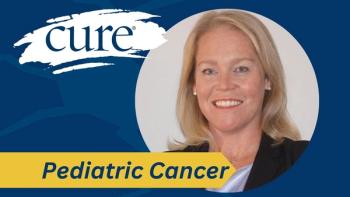
Voranigo for Astrocytoma or Oligodendroglioma an ‘Important Step Forward’
The first FDA-approved systemic therapy may be beneficial to patients with low-grade astrocytoma or oligodendroglioma with IDH1 or 2 mutations.
The recent Food and Drug Administration (FDA) approval of Voranigo (vorasidenib) is “now becoming part of standard of care option” for patients with slow-growing grade 2 astrocytoma or oligodendroglioma with a susceptible IDH1 or IDH2 mutation, an expert told CURE®.
Of note, Voranigo marks the
Types of gliomas, such as astrocytoma and oligodendroglioma, are types of cancers that originate from the glial cells in the brain. Astrocytomas develop in children or adults and account for approximately half of primary brain tumors. Oligodendrogliomas occur in approximately 2 to 4% of primary brain tumors and are most common in young and middle-aged adults.
Before this approval, there were mainly two common approaches, Dr. Matthias Holdhoff, co-director of the Brain Cancer Disease Group at the Sidney Kimmel Comprehensive Cancer Center at Johns Hopkins, said during an interview with CURE®. These two approaches included initial watch-and-wait surveillance (observing the tumor for any growth or changes in its appearance on imaging) or treatment with radiation plus chemotherapy, he said.
He noted that patients with gliomas who have IDH mutations, are commonly younger adults. Because IDH-mutant low-grade tumors tend to be slow-growing, it is a reasonable choice in select patients to postpone radiation and chemotherapy, known to be more aggressive treatments with known toxicity, he said.
With the approval of Voranigo, Holdhoff emphasized that “for us in the brain tumor community and most importantly, for our patients, this is an important step forward.”
How Voranigo Fits into the Treatment Process
“Not every patient responds to this treatment, and it takes several months to find out whether there’s a benefit,” he said. “Some tumors shrink, some tumors stay the same and some will continue growing. But with patients with responses, this might provide an opportunity to delay radiation.”
For patients with IDH-mutant low-grade astrocytoma and oligodendroglioma, Holdhoff explained that these tumors typically grow slowly; similarly, treatment responses with Voranigo may be slower because of the slower nature of these tumors.
Holdhoff described that slow-growing tumors are similar to how one watches a larger tree grow in your yard.
“Let’s say you have a big tree in front of your house. You don’t see it growing from day to day or from month to month, but maybe from year to year,” he explained. “So this tumor, if it responds to the treatment, you might see some shrinkage very slowly over time.”
Now, Voranigo may bridge the gap between radiation plus chemotherapy and observation, Holdhoff said, and “is now becoming part of standard of care.”
“The standard of care for low-grade gliomas, for newly diagnosed oligodendrogliomas, was either initial radiation, chemotherapy or observation, and there’s a huge gap,” he said. “These are sort of like two extremes, but now having something that is a targeted therapy that is in between them, I think it’s really exciting and will hopefully be helpful for many of our patients.”
Unmet Needs With Voranigo and Advice for Patients
Unmet needs still remain for patients who experience disease progression (worsening or spreading) after standard therapy, he noted. After this approval, he mentioned that it “opens up a spectrum of new clinical trials” to explore the use of this medication in combination with other treatments for IDH-mutant gliomas.
For patients who may be eligible for treatment with Voranigo, Holdhoff recommended speaking in detail with their oncologists or neuro-oncologists to see whether Voranigo may be beneficial.
“We also need to be mindful that this is a new drug and we still have to learn about the overall benefits from this,” he said. “The pros and cons of this should be weighed carefully against the question of whether to pursue observation or move to radiation and chemotherapy.
“It’s not a black-and-white situation , and every patient care decision, requires a careful discussion about all available treatment options.”
For more news on cancer updates, research and education, don’t forget to




